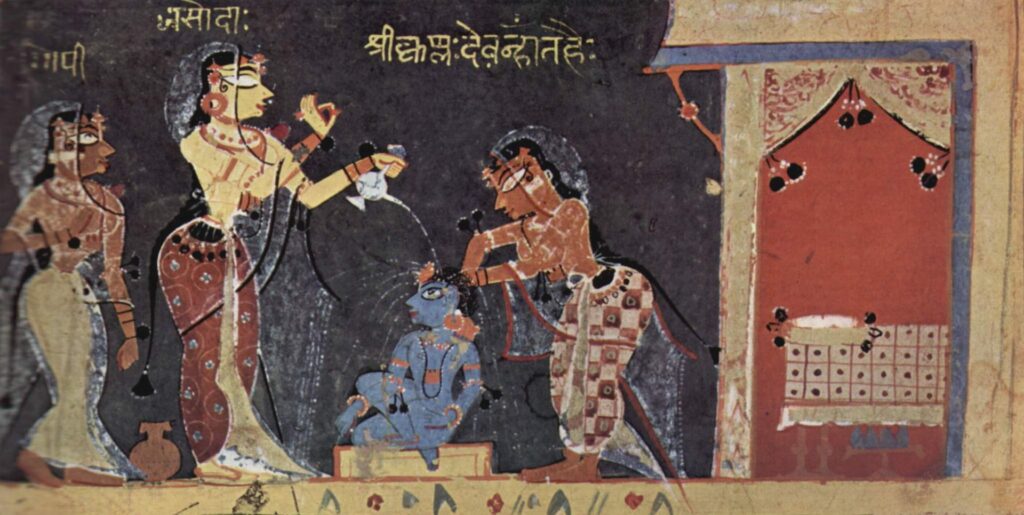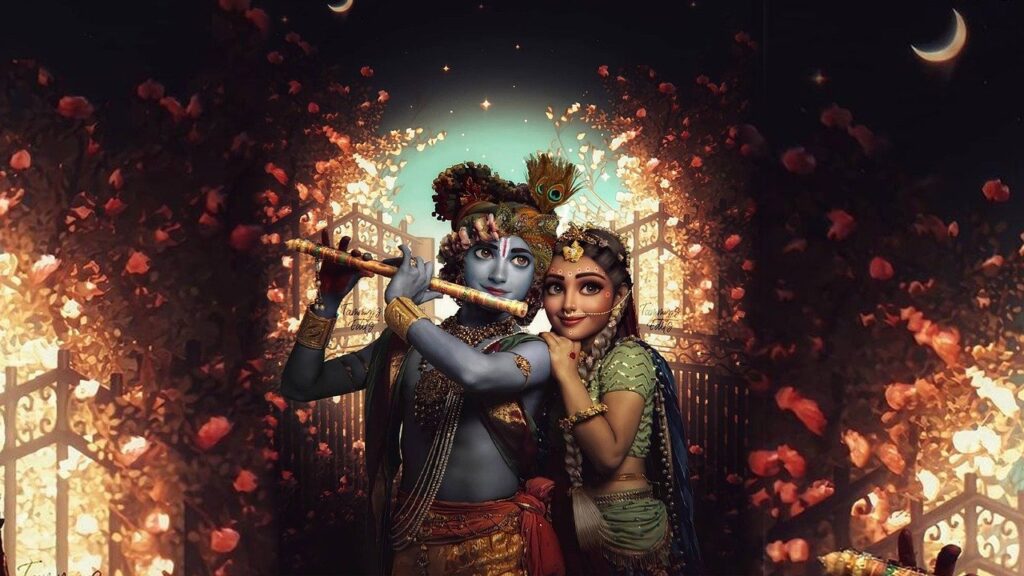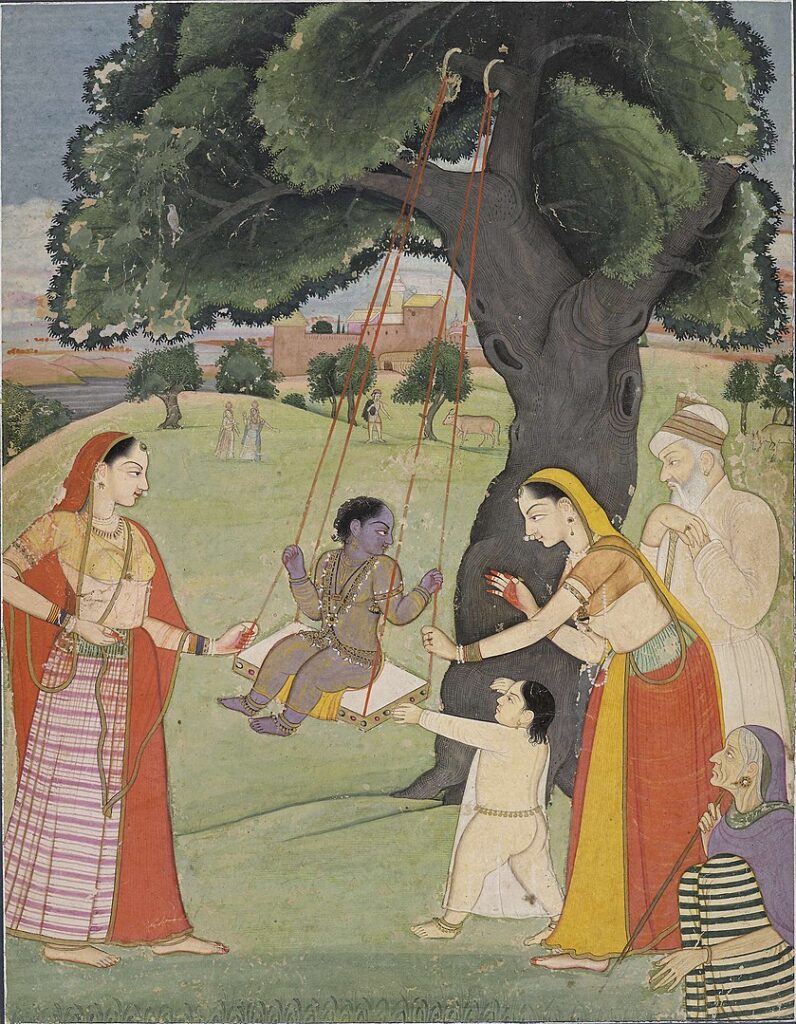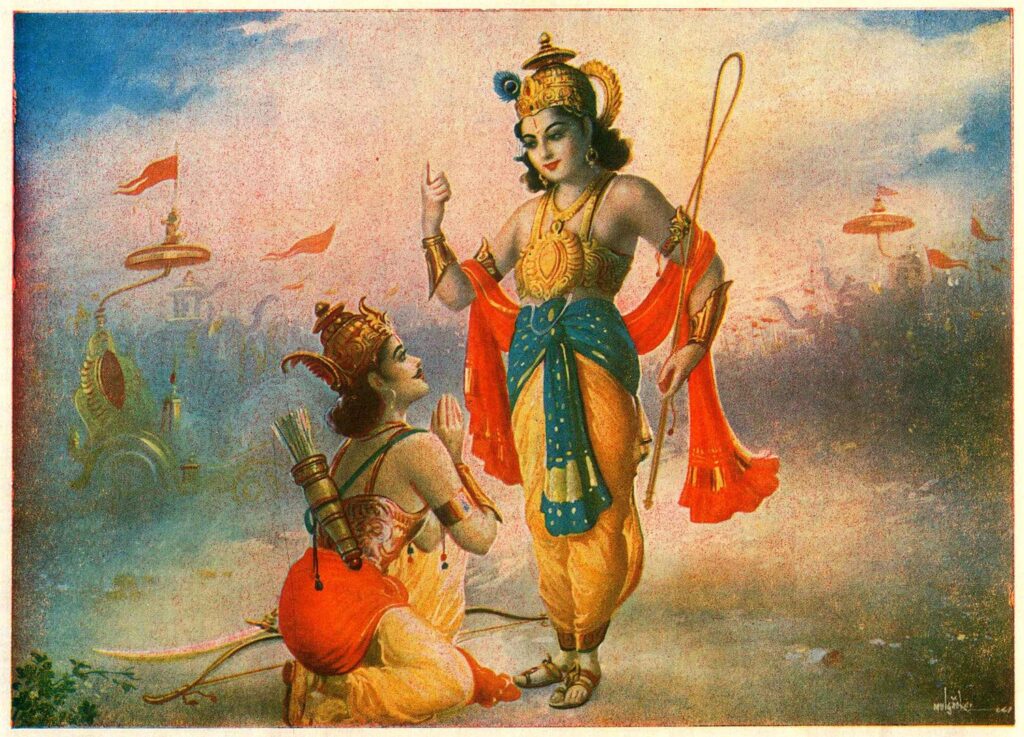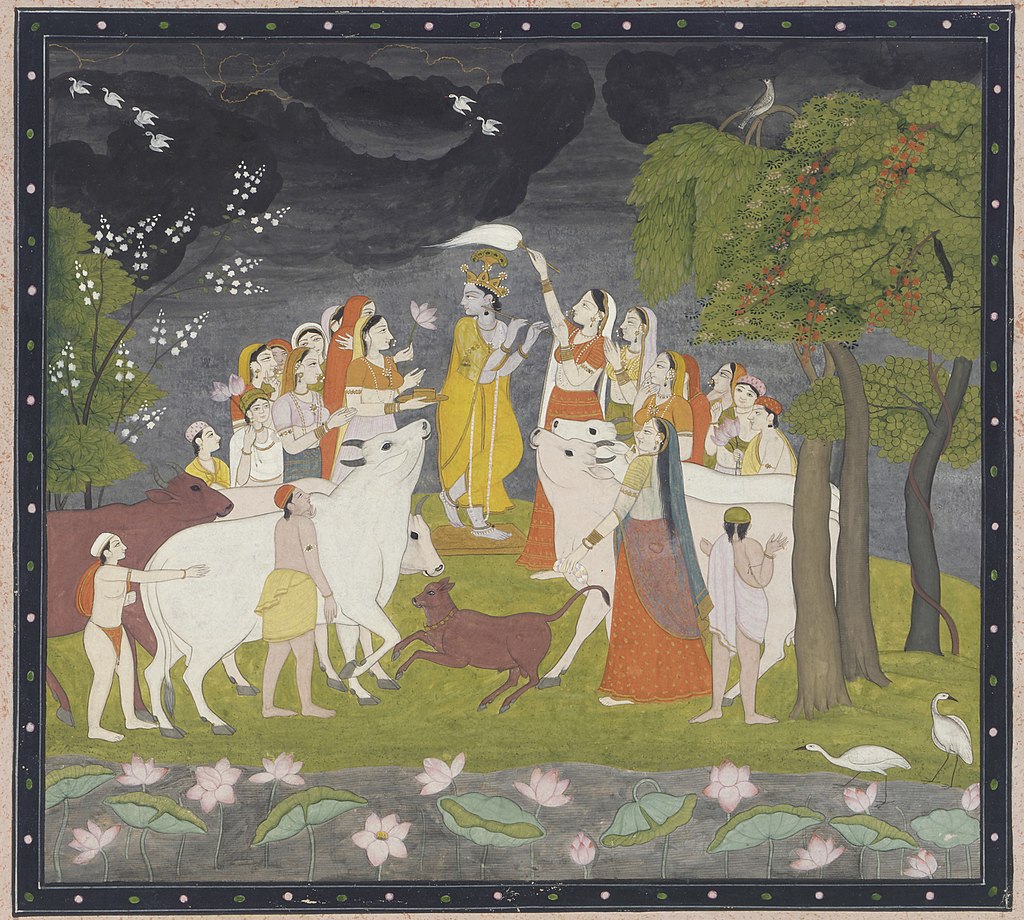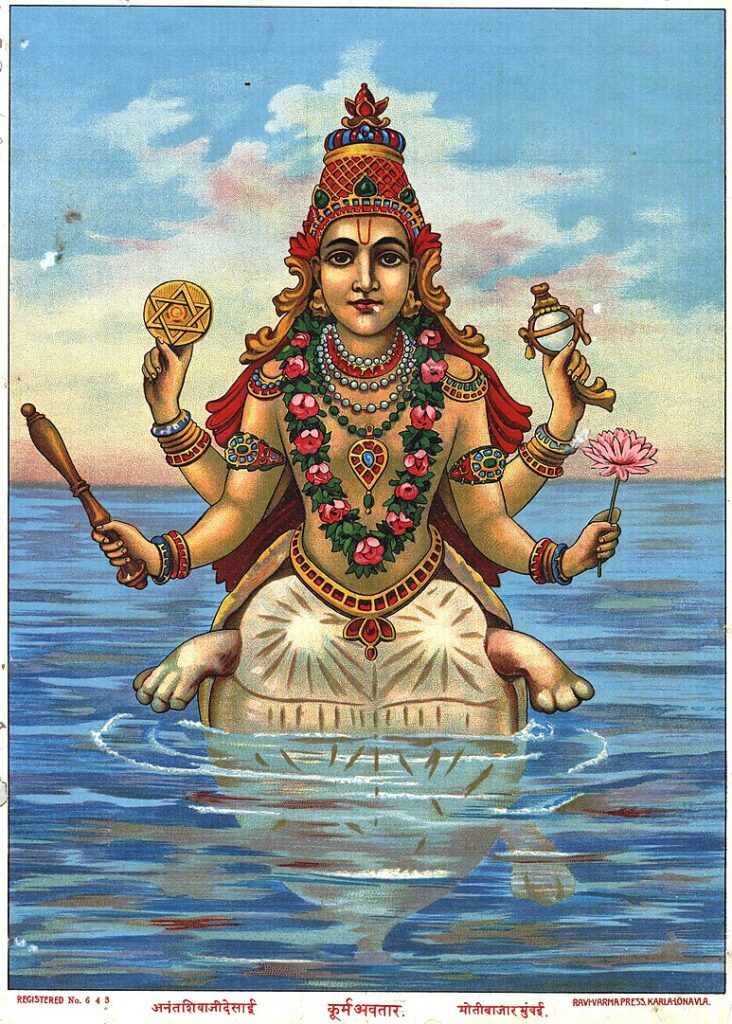
tatrapi devasambhutyam vairajasyabhavat sutah
ajito nama bhagavan amsena jagatah patih
payodhim yena nirmathya suranam sadhita sudha
bhramamano ’mbhasi dhrtah Kurma-rupena mandarah
(Srimad-Bhagavatam 8.5.9-10)
–
In the sixth Manvantara, Lord Vishnu, the supreme Lord, appeared in His partial expansion as Kurma avatar. He appeared as the son of Vairaja from the womb of Devasambhuti. Lord Ajita induced the churning of the ocean of milk and produced nectar for the demigods. Taking the form of a tortoise, He carried on His back, the great mountain known as Mandara.
Once sage Durvasa came across demigod Indra, the king of heavens. The sage greeted the king with a garland of marigold. Indra, however, was too proud and did not pay any attention to the sage. Trivializing the garland, he placed it upon the trunk of Airavat, his white elephant. The animal immediately flicked it to the ground and trampled it. Feeling insulted, Durvasa muni immediately cursed Indra by swearing, ‘Be bereft of all your opulence’. Shortly thereafter, the demons attacked and won over the demigods, who suffered a humiliating defeat. Many of the demigods lost their lives in the battle. Although the sages tried to revive them, they could not bring them back to life.
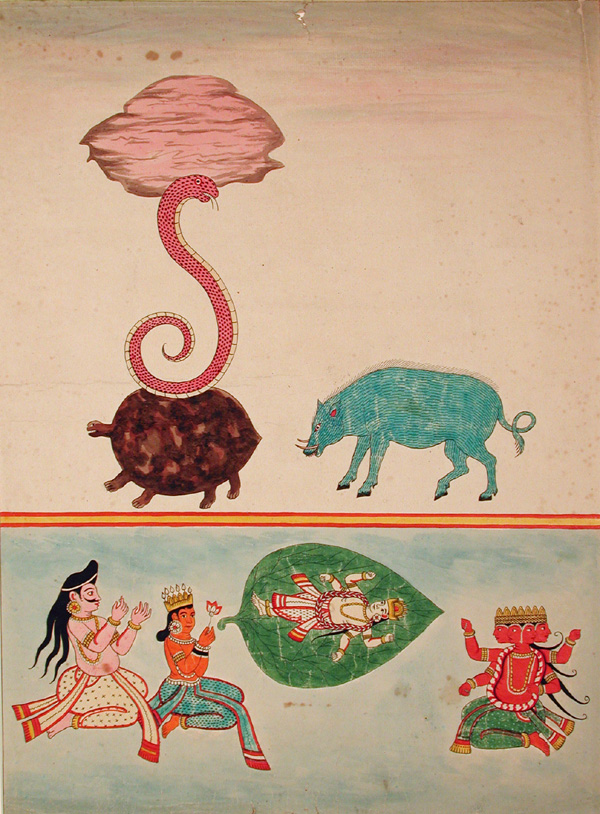
On the advice of Lord Brahma, the demigods headed to the boundary of Svetadvipa, situated on the ocean of Milk. The demigods, headed by Brahma, offered many prayers to Lord Vishnu. Being satisfied, Kshirodakashayi Vishnu appeared before them. His effulgence blinded everyone. None but Brahma could witness Him. Lord Vishnu suggested that the demons had become very powerful at that point in time and hence the demigods should make peace with them. He expressed that the demigods and the demons should churn the ocean of Milk together to fetch the nectar of immortality. Lord Vishnu instructed that Mandara mountain be used as the churning rod while the serpent Vasuki be used as the churning rope. The Lord warned the demigods, that they should not be greedy for the various other things that might be obtained during the churning of the milk ocean. They should neither object nor show anger if the demons were to take them. The Supreme Lord disappeared after giving these instructions.
Samudra Manthan – Churning of the Milk Ocean
Accordingly, Lord Indra then made a truce with Bali Maharaja, the king of the demons. The decision to churn the ocean was made on the condition that whatever nectar would be produced during the churning would be shared by both the demigods and the demons. Bali Maharaja, a disciple of Shukracharya, was the grandson of Prahlada Maharaja, the great devotee of Lord Vishnu. Bali was interested and agreed to Indra’s deal. He thought, ‘Once we’ve helped produce the nectar by churning the ocean, we demons can easily steal it from the weakened demigods’. Accordingly, he and Indra signed a truce.

Several demons and the demigods lost their lives, being crushed while trying to lift up the Mandara mountain. Lord Vishnu revived them with His glance. He then effortlessly picked up the mountain and placed it near the ocean of Milk. Thereafter, serpent Vasuki wrapped around the Mandara mountains like a rope. The demons held the hood of the serpent while the demigods grasped its tail. With great endeavor, the churning of the ocean began, but after some time, the mountain, which was supportless, began sinking into the ocean.
Appearance of Kurma Avatar (Tortoise incarnation)
Finding the demigods and the demons frustrated, the Supreme Lord Sri Hari assumed the wonderful form of Kurma avatar (tortoise incarnation) and lifted up the mountain from the ocean on His back. The mountain was one hundred yojanas wide (1 yojana = 8 miles). But the Lord hardly felt anything. While the great mountain was being churned on His back, the Lord merely felt an itching sensation.
puramrtartham daiteya-danavaih saha devatah
manthanam mandaram krtvä mamantam kstra sagaram
mathyamane tada tasmim Kurmarapi janardanah
vyabhara mandaram devo devanam hitakamyaya
deväsca tustuvurdevam naradadya maharsayah
Kurmarupadharam drtsva saksinam visnumavyayam
(Kurma Purana, Purva 11.27.29)
–
In the past, the demigods and the demons churned the Ocean of Milk using Mandara Mountain as a churning rod to obtain the nectar of immortality. At that time, Lord Janardana (Sri Hari) assuming the form of a tortoise, desiring the welfare of the demigods, carried the Mandara Mountain upon His back. Upon seeing the imperishable Lord Visnu in His incarnation as a tortoise, the demigods, Narada, and other sages became very pleased.
prstha bhramyad amanda-mandara-giri-gavagra-kanduyanan
nidraloh kamathanater bhagavatah svasanilah pantu vah
yat-samskara-kalamuvartana-vasad vela-nibhenambhasam
yatayatam atandritam jala-nidher nadyapi visramyati
(Srimad-Bhagavatam 12.13.2)
–
May you all be protected by the winds of Lord Kurma’s breathing in His sleepy state. It was caused due to the pleasure He derived from the scratching of His back by the sharp-edged stones lying on gigantic whirling Mandara Mountain. These inhalations and exhalations of His breath still exist in the form of ocean tides that never cease.
At first, the churning of the milk ocean produced a deadly black poison that floated over the waves and imperiled the entire world. When the demigods sought help, merciful Lord Shiva condensed and consumed the entire poison. The poison turned Lord Shiva’s neck blue and therefore he is also referred to as ‘Nilkantha’. A few drops of the poison spilled over and were consumed by the snakes, scorpions, and other poisonous creatures. As the churning continued, magical animals, sparkling gems, medicinal herbs, beautiful damsels, fragrant flowers, etc emerged from the milk ocean. At last, a beautiful blackish figure, clothed in yellow garments and decorated with wonderful gems appeared from the ocean. He carried a golden pot filled with the nectar of immortality.
Appearance of Mohini
As soon as the demons noticed this, they seized the pot and ran off. The demigods became anxious and sought help from Lord Vishnu. The Supreme Lord then assumed the beautiful and enchanting form of Mohini, a blackish woman dressed in a crimson saree and wearing golden bangles. Her restless eyes and feminine charms lured the attention of the demons. The demons quarreled amongst themselves over who would taste the nectar.
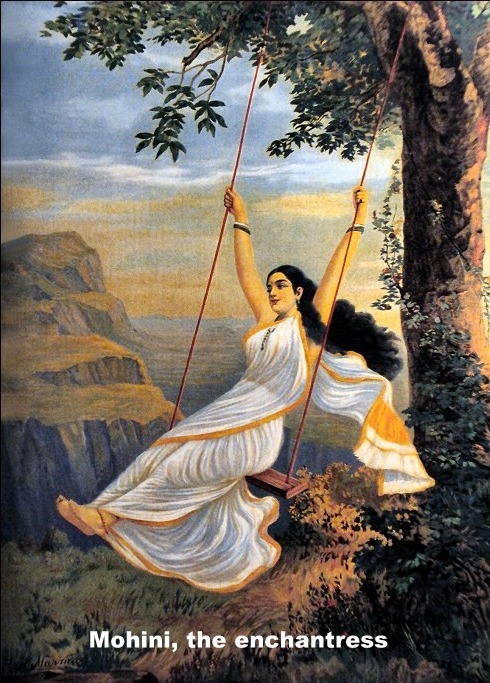
Being unaware of Mohini’s identity, they handed over the pot of nectar to Her and asked Her to settle their dispute. Mohini asked the demons to sit in a row, and also requested the demigods to do the same. She conveyed to the demons that the demigods were very greedy for the nectar and hence she would give them just a little, at first. She praised the demons as great heroes and in this way deceived them to wait until the demigods had acquired the nectar. The demons, being flattered, did not oppose her proposal. Once the demigods had relished the entire nectar, Mohini assumed Her original form as Vishnu. The demons understood that they had been tricked by the Lord. The demigods, having tasted the nectar, had already turned immortal.



